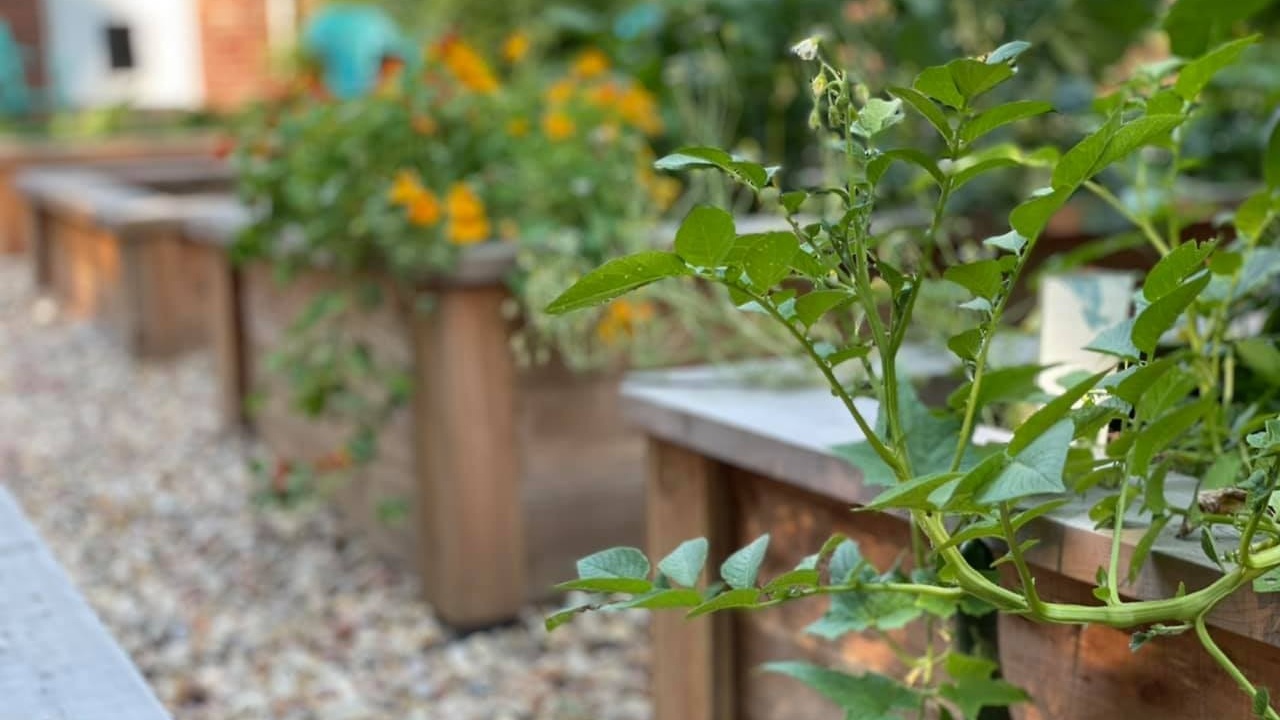Edible Flowers For Fall in the Midwest

Dandelions, pansies, and chives oh my!
Let’s talk about the edible flowers of the midwest!
Below is a list of the fall edible flowers you can grow in Kentucky and the midwest as well as some ways to use edible flowers. Some add strong flavor, others are used in herbal remedies, and all of them look beautiful taking any dish from good to gorgeous! I always encourage gardeners to plant fruits, vegetables, and flowers to increase their food security through their garden. The flowers help attract more beneficial bugs and pollinators and if you use the flowers listed in the blog you can eat them all too so no space in the garden goes to waste.
Keep in mind when growing these treat them just like fruits and veggies, avoid using pesticides and herbicide on the plants especially the flower and try to only use natural fertilizers. Give me a call if you want to fertilize your beds because I’ve got a great all natural soil booster I can come and apply as well as clean up your beds and ...
Fall Cool Season Pests

As we head into fall most insects will start to find places to overwinter and be less active in the garden, that being said there are still plenty that will stick around to eat the last of the available harvest before winter sets in! Be on the look out for these fall garden pests to protect your fall harvest, and set yourself up for success next year! If you can stay on top of pest control in your garden and kill the insects before they can find a place to overwinter then you will reduce the number immerging in the spring to snack on you next seasons crops. To control these pests in your home garden the best management is physically removing them and killing them on sight!
Beet Armyworm are a caterpillar that loves bush beans in the fall so pay special attention to these and any cucurbits you may still have in your garden like squash, pumpkins, or melons. The larvae will eat the leaves and even the fruits of your plant as they mature. Be on the look out for the caterpillar but also fo...
7 Food Scraps to Regrow and Repurpose

The cool season is not far off and that means fall gardens are in! We all love free plants and this summer you may have had to purchase some cool season plants to supplement your garden so today I want to talk about how you can take the scraps of 7 common cool season plants and regrow them! I will walk you through how to regrow green onions, romaine lettuce, celery, carrot tops, bulb fennel, leeks, and herbs.
What you'll need:
- A container (glass preferable), this could be a cup or a dish
- Fresh water
- A sunny window is preferred but a bright indirect light will also work
- Food scraps!
You may have already dabbled in the art of regrowing food scraps; green onions are an easy and common way to start.
1. Green Onion
I am starting with green onions these are by far the easiest plants to regrow from grocery store scraps or from your own garden scraps. When you buy them at the store you get the whole plant but often only use the greens cutting back till only an inch is l...
Cool Season Planting: The basics
The cool season is just around the corner, and you can start getting your garden ready with these basics! It is time for lettuces, beets, swiss chard, cabbage, dill, and more!
To prepare you need to prune, clear, prep the soil, and pick your plants. Very soon we plan to release a Free Fall Challenge to walk you step by step through growing a fall garden so in this blog I just want to go over the basics.
Pruning
Your summer garden should be winding down, plants will produce less, and be producing smaller fruit. The plants that are still producing can be pruned back to encourage the plant to put out their last fruit. Any dead or yellowing foliage can be cut away and put in your compost.
Clear
Clear away any dead or dying plants and any debris that may have built up in your garden. You want to clear as much soil space as you can in your beds for the new planting, but leave anything still producing, and give your garden a fresh start.
Prep the Soil
Between growing seasons, you want...
Garden Bed Restoration
Amy is my neighbor, client, and new to gardening. This year she tried tomatoes, cucumbers, basil, calendula, peppers, lettuces, green beans, and a few others. Tomatoes and cucumbers can be difficult plants for a beginner. They need to be in the soil longer, need more space, more sun, and more maintenance than others.
Her garden space is limited to an 8x2.5x2 bed. We interplanted her bed to grow in underutilized spaces to maximize her harvests. Her summer plants got huge which got a bit messy. Next year we will redesign her layout to avoid overcrowding, but overall a great first season!
This is her garden box. It's built with untreated Eastern Red Cedar, which is prone to lose its pinkish, purple color rapidly the first season. The sides facing the sun were silver, while the sides facing away from the sun were more orangish pink. Watch how quickly the pink & purple color returns with a bit of sanding and a coat of wood sealant!
Cedar Bed Restoration is a service we offe...
Fall Garden Planning


